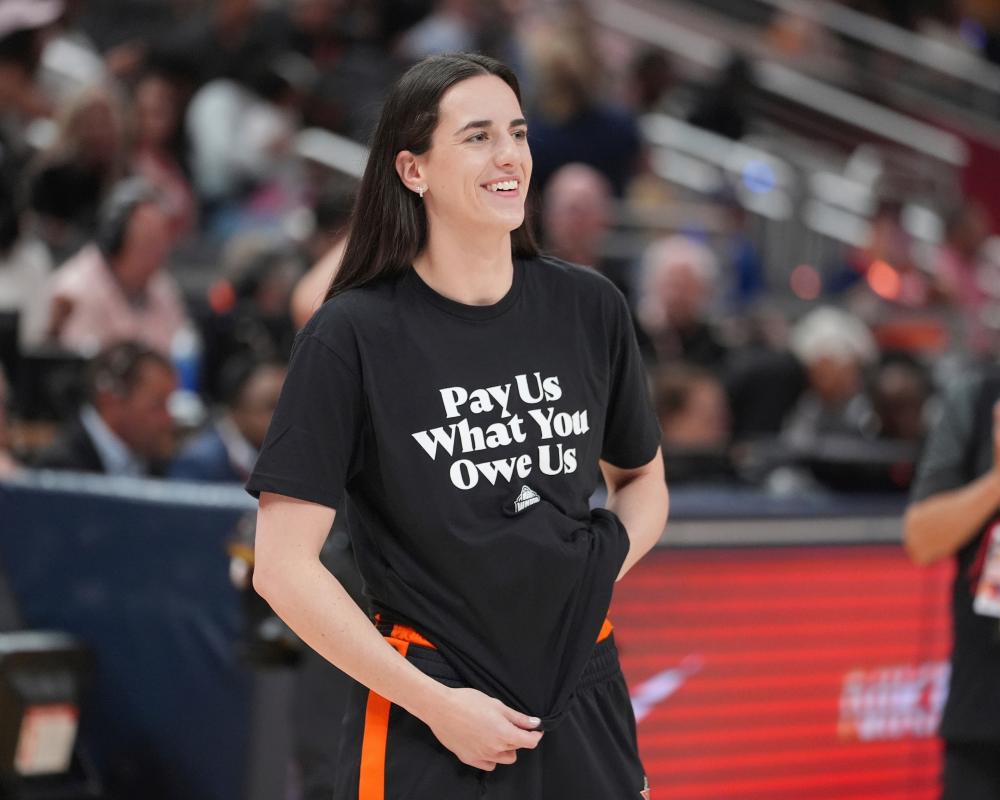Napheesa Collier made history on Saturday night by scoring a record-breaking 36 points in the WNBA All-Star Game. However, much of the attention was actually drawn to the players’ pre-game warm-up shirts bearing the message, “We’ll pay us what you owe.” This statement highlights ongoing tensions following the failure to finalize a new collective bargaining agreement between the players and the league.
Player compensation in sports is notoriously complex, and this is especially true in the WNBA, which is closely linked to the NBA both literally and figuratively. Though many WNBA teams no longer have direct NBA affiliations, some still do, and NBA Commissioner Adam Silver describes the leagues as “merged,” highlighted by an 11-year broadcast rights deal. Yet, the WNBA continues to operate at a loss—estimated at around $10 million annually in 2018, rising to a projected $40 million loss in 2024, adjusted for inflation. This figure seems odd considering recent public data indicating improved financial health for the league.
Attendance, which dropped from over 10,000 in the late 1990s to below 7,000 post-pandemic, has rebounded strongly in 2024, nearly hitting 10,000 again. Revenues have also climbed from $122 million in 2019 to around $180 million in 2023. Meanwhile, the salary cap has increased from an inflation-adjusted $1.1 million in 2003 to $1.5 million in 2025, though teams have fewer players now than they did then. Despite rising costs, these increases don’t fully offset the revenue growth or gains in broadcasting rights. Major team owners like Jo La Cobb and Peter Gerber are making significant financial commitments to their WNBA teams, even paying almost $60 million for the entire Golden State Valkyries roster compared to Steph Curry’s individual NBA contract.
The key issue remains unclear financial transparency: how revenues are ultimately allocated—whether reinvested in the league or elsewhere—is not revealed. Generally, players in smaller leagues receive a much smaller share of revenue; WNBA players earn less than 10%, far below many other professional sports leagues. The practice of “voodoo accounting” is common in sports, with teams often portraying tight finances to justify lower salaries, a tactic seen across major leagues.
An important indicator of a WNBA team’s actual value is its resale price. For example, the New York Liberty’s sale value jumped from roughly $100 million in 2019 to an estimated $450 million six years later. This stark increase highlights why players question their relatively low pay, with many needing to seek additional income in the offseason. The All-Star players’ message on their shirts reflects a legitimate concern: though they don’t expect NBA-level salaries—where the rookie minimum is $1.27 million compared to the WNBA’s $66,000—they argue their compensation should better reflect their league’s growth and value.
Beyond pay, the issue extends to job security and roster sizes. NBA rosters typically carry 15 full-time players and three two-way players, while WNBA teams often have just 11 or 12 players, sometimes fewer due to injuries or other causes, which can heighten the pressure on athletes with limited pay and job security.
WNBA players hoping to improve compensation face some resistance, including less enthusiasm from some NBA owners and negative reactions on social media to their statements. However, the post-Covid surge in interest for women’s sports shows no signs of slowing, and available financial data largely supports the players’ case. Public support for better pay is likely to grow.
Fan Take: This issue matters deeply to WNBA fans because it touches on fairness and recognition for the athletes whose talents have helped elevate the league’s visibility and value. Addressing these pay disparities and improving player conditions could lead to a stronger, more sustainable WNBA, ultimately benefiting the sport and its dedicated fanbase.



